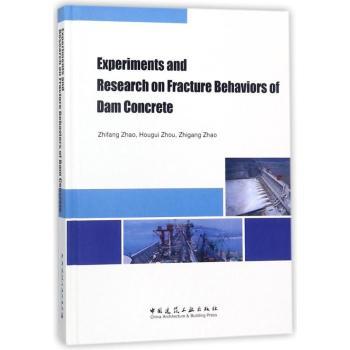内容简介
本书在三峡大坝的建造基础上,对“大体积混凝土裂缝方针段里分析研究”等课题实验和研究成行结,并提出了大坝混凝土防裂、控裂乃建造无裂缝大坝的工程理论和工程实践的案例体系,对今后大坝工程建设技步具有重要的作用。
目录
序I
Preface I
Preface II
Summary
1 Introduction
1.1 Overview
1.2 Fracture Experiments of Tnree Gorges Dam Concrete
1.2.1 Specimens
1.2.2 Materials and mix proportions
1.2.3 Test program
1.2.4 Three-point bending notched beam (TPB) tests
1.2.5 Wedge splitting (WS) test
1.2.6 Direct tension (DT) tests and fundamental mechanical performance tests
2 State-of-the-art Review on Concrete Softening Curve
2.1 Introduction
2.2 Determination Approach of the Tensile Softening Relationships (a-w curves)
of Concrete
2.2.1 Direct tension test method
2.2.2 J-Integral method
2.2.3 Inverse analysis method
2.3 Shape of Softening Curve of Concrete
2.3.1 Linear shape softening curve of concrete
2.3.2 Linear softening curve of concrete
2.4 Conclusions
References
3 Two Methods for Determining Softening Relationships of Dam Concrete andWet-screening
Concrete
3.1 Introduction
3.2 Experiments
3.2.1 Material, mix and specimens preparation
3.2.2 Fracture tests
3.3 Softening Relationships of Dam Concrete and Wet-screened Concrete
Determined by the Direct Tension Tests
3.3.1 Stress-deformation (a-d) curves
3.3.2 Direct tension method for identifying a-w curve
3.3.3 Results of direct tension method
3.4 Softening Relationships Determined by the Inverse Analysis Method
3.4.1 Cra strength
3.4.2 Inverse analysis method based on the cra strength criterion
3.4.3 Results of inverse analysis method
3.5 Comparison of Softening Relationships of Dam Concrete and Wet-screening
Concrete
3.5.1 Comparison of Softening Relationship of Dam Concrete and Wet-
Screening Concrete Determined by Direct Tension Method and Inverse
Analysis Method
3.5.2 Comparison of Fracture Energy of Dam Concrete and Wet-Screening
Concrete Determined by WOF Method and TSD Method
3.6 Conclusions
References
4 Prediction of the Tension Softening Curve of Dam Concrete based on BP Neural




 VIP会员
VIP会员